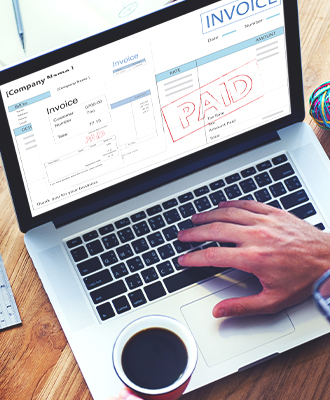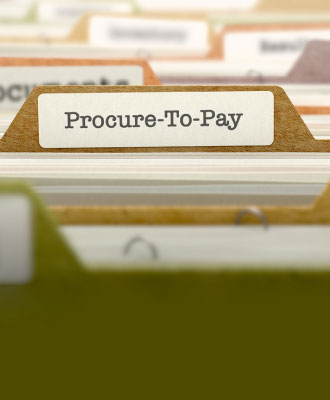In the past, purchasing departments were sometimes regarded as potential sources of minor cost savings (usually through cost reduction), rather than sources of value creation and strong return on investment (ROI). But through the use of modern automation technology and the widespread adoption of more nuanced evaluation of data gathered from Key Performance Indicators (KPIs), everything from inventory control to supply chain management can be tracked as a source of both substantial savings and continuous improvement.
Not all purchasing KPIs are created equal, of course. Identifying and tracking the most lucrative and productive indicators will give your procurement department the information it needs to streamline your procurement processes, improve efficiency, and achieve a better procurement ROI.
Essential Purchasing KPIs
To maximize value, efficiency, and cost management throughout the procurement cycle, focus on these KPIs:
- Purchase Order KPIs
- Purchase Order Cycle Time
- Average Cost of Processing a Purchase Order
- Purchase Orders Processed Electronically
- Supplier KPIs
- Number of Vendors
- Supplier Capacity
- Supplier Compliance Rate
- Procurement ROI KPIs
- Cost Avoidance
- Cost Reduction
- Total Procurement ROI
“The lower your cycle time, the faster and more efficiently your procurement team will be. This, in turn, lowers total procurement costs and ensures your staff can apply their talents to higher-level concerns.”
Purchase Order KPIs
- Purchase Order Cycle Time
In the days of pen and paper, the path traveled by a purchase order was be an arduous one, fraught with potential missteps, errors, and delays. The total time spent on any given purchase order—from its creation on through approval, receipt, invoicing, and payment—is a valuable metric for measuring individual and departmental efficiency.
A related sub-metric, PO Placement Time, is also important to efficiency; the American Productivity and Quality Center (APQC)’s 2018 benchmarks for procurement found that “top performers” were able to place a PO within 5 hours. By comparison, procurement organizations considered to be “bottom performers” took as long as 48 hours.
The lower your cycle time, the faster and more efficiently your procurement team will be. This, in turn, lowers total procurement costs and ensures your staff can apply their talents to higher-level concerns.
- Average Cost of Processing a Purchase Order
Because companies range widely in size, industry, and market share, it’s hard to pin down an average cost for processing a purchase order. But the core component of this procurement KPI is total time spent, broken out by task and the number of staff involved in each step.
In this way, productivity is tied to what’s known as Full-Time Equivalent (FTE) employee spend. Ideally, you’ll have the fewest number of FTEs processing the maximum number of POs with the highest level of accuracy. This reduces errors, cuts total overhead, and improves the overall efficiency of your procure-to-pay (P2P) process.
- Purchase Orders Processed Electronically
This KPI might seem like a foregone conclusion in the age of automation, but digital transformation (the shift toward technology-driven solutions like automation, artificial intelligence, and the paperless office) still has a long road to travel. Measuring this KPI is crucial; the more paper you’re pushing, the greater the risk for delay and error—and the longer your total procurement cycle will be.
Supplier KPIs
- Number of Vendors
As the old saying goes, man does not live by bread alone—and neither should your company. Diversifying your supply chain helps reduce risk exposure and improves the chances you’ll be able to obtain goods and services quickly. But when you’ve got too many vendors, you might find your system clogged with redundancies and miss out on the lucrative discounts and special terms that come with limited suppliers and contracts.
Tracking this KPI will give you a clear picture of the vendors you need, the vendors who have potential to become preferred vendors, and those who aren’t a good fit. It ties in neatly with the other Supplier KPIs to provide you a complete picture of your supply chain, and the best ways to leverage your vendor relationships for maximum benefit.
- Supplier Capacity
Measuring how many orders were filled properly and completely per vendor is the core of this KPI. Knowing a vendor has the goods and services you need, when you need them, makes vendor evaluation easier and improves relationships and overall efficiency.
Aim for 90% (or higher) availability, with on-time delivery, to ensure your supply chain is uninterrupted.
- Supplier Compliance Rate
Trust and reliability are the heart of a well-managed supply chain, and part of building the relationships that create that trust is high vendor compliance. This KPI gives you invaluable insight into how well a vendor meets their agreed-upon obligations with regard to lead time, delivery time, discounts, and terms.
Measuring compliance shows you which vendors really are your trusted partners, and which ones may need to be rehabilitated—or replaced.
Procurement ROI KPIs
- Cost Avoidance
The best way to reduce costs is to avoid incurring them in the first place. This metric tracks “soft savings” such as preventative maintenance and new investments that support process improvement.
This KPI pairs well with cost reduction to strengthen the bottom line by revealing opportunities for improvement while maintaining, rather than repairing or restoring, assets via incurred costs.
- Cost Reduction
If cost avoidance is “soft savings,” then cost reduction is its hard-as-nails complement. This KPI compares current costs to previous ones, and identifies areas where you can bring together strategic sourcing, process and policy improvements, and financial analytics to produce deep savings you can increase as time goes by and your analytics improve.
The goal is to reduce the total cost of ownership (TCO) for everything procured for the company, whether it’s indirect or direct spend. Lowering TCO raises value and profitability, supporting company-wide goals.
- Total Procurement ROI
Like other departments in a modern company, procurement organizations are complex. Your total spend supporting the procurement function (including staff, overhead, contracting, and outsourced support) needs to generate a healthy return in order to keep your business “on the grow.”
This KPI can be expressed in a number of ways, but a good rule of thumb is express procurement ROI as a ratio of X dollars spent for every $1,000 of revenue earned. A common goal is to see a return of $10 for every $1 spent on procurement investments.
Improved Tracking for Purchasing KPIs Starts with Automation
Measuring is just the first step. Knowing which KPIs to track is important, but to leverage the insights you glean and effect real change through process improvement, automation is key. The right procurement software package connects all your stakeholders, streamlines every step of the P2P process, and centralizes control, communications, and strategy.
Automation reduces human error, improves data management, and cuts not just spend, but fraud, risk, and frustration. You’ll not just track your KPIs, but use them to create benchmarks that push your costs down and your productivity up.
A Better Bottom Line Awaits
If you’re not tracking your procurement performance, how can you ever hope to improve it? The datastream is rich with potential for profit and process improvement, and your purchasing department can provide a steady flow of value for your business. Dive in and use what you learn to improve productivity, reduce costs, and build a better supply chain.
Track and Transform Your Procurement Performance With PurchaseControl
Find Out How








